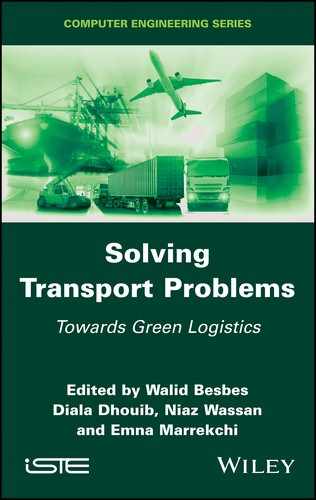Book Description
Solving Transport Problems establishes fundamental points and good practice in resolving matters regarding green transportation. This is to prompt further research in conveyance issues by providing readers with new knowledge and grounds for integrated models and solution methods. Focusing on green transportation, this book covers various sub-topics and thus consists of diverse content. Traditionally, academia and transport practitioners have mainly concentrated on efficient fleet management to achieve economic benefits and better-quality service. More recently, due to growing public environmental concerns and the industry understanding of the issue, the academic community has started to address environmental issues. The studies of green transportation compiled in this book have identified certain areas of interest, such as references, viewpoints, algorithms and ideas. Solving Transport Problems is for researchers, environmental decision-makers and other concerned parties, to start discussion on developing optimized technology and alternative fuel-based integrated models for environmentally cleaner transport systems.
Table of Contents
- Cover
- Preface
- Acknowledgments
- 1 An Adaptive Large Neighborhood Search Heuristic for the Green Dial-a-Ride Problem
- 2 Role of Green Technology Vehicles in Road Transportation Emissions – Case of the UK
- 3 Transport Pooling: Moving Toward Green Distribution
- 3.1. Introduction
- 3.2. Concepts of collaborative logistics
- 3.3. Pooling of physical flows between organizations
- 3.4. Literature review
- 3.5. Proposal of pooling scenarios for the urban distribution of goods
- 3.6. Comparison of scenarios
- 3.7. Proposal for a shared long-distance distribution model
- 3.8. Conclusion
- 3.9. References
- 4 A Ruin and Recreate Solution Method for a Lexicographic Vehicle Routing Problem Integrating Park-and-Loop and Car Sharing
- 5 An Overview of the Recent Solution Approaches in the Green Vehicle Routing Problem
- 6 Multi-Criteria Decision Aid for Green Modes of Crude Oil Transportation Using MACBETH: The Sfax Region Case
- 7 Green Reverse Logistics: Case of the Vehicle Routing Problem with Delivery and Collection Demands
- 8 An Improved DTC Induction Motor for Electric Vehicle Propulsion: An Intention to Provide a Comfortable Ride
- 9 Optimization in Multilevel Green Transportation Problems with Electrical Vehicles
- List of Authors
- Index
- End User License Agreement
